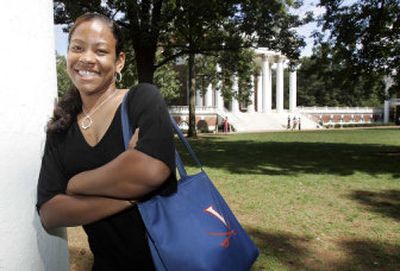Black schools’ popularity waning

RICHMOND, Va. – When Jessica Page visited Hampton University in March, she considered the trip a formality. She had already made up her mind to attend the school, considered by many a jewel among the nation’s historically black institutions.
Then she saw the campus. The dorms weren’t as sleek as she had pictured. Buildings seemed antiquated.
“I wasn’t impressed,” said Page, who later enrolled at the University of Virginia at Charlottesville. “Hampton was my No. 1 choice – until I visited.”
Page is part of a steady trickle of talented young blacks slipping away from the nation’s most prestigious black colleges.
Experts say aging campuses are one reason. But other reasons include increasing competition from predominantly white schools trying to become more diverse; changes in black students’ desires; and greater opportunities available to them in a society more integrated than that of their parents.
“The issue for black colleges is not, in my view, that there are not enough students to go around,” said Michael Lomax, president of the United Negro College Fund. Instead, “students have a lot more choices, and those students are being careful and more selective than ever before.”
The 103 historically black colleges and universities across the nation, clustered mostly in the South, were largely funded during the Reconstruction by wealthy whites as an alternative to universities that had shut out blacks.
For generations, these schools were valued by blacks for their unique campus traditions, their family-like environment and their skill at grooming the nation’s black intellectual elite.
But the attraction appears to be waning.
Total U.S. college enrollment of black men and women ages 18 to 24 has increased from 15 percent in 1970 to roughly 25 percent in 2003. The number enrolling in historically black schools has slowly increased, too, from 190,305 in 1976 to more than 230,000 in 2001.
But the percentage of black college students choosing black schools has been slipping, from 18.4 percent in 1976 to 12.9 percent in 2001, according to the U.S. Education Department’s most recent figures.
Twenty-six of 87 black schools profiled by the department recorded enrollment declines between 1995 and 2004. Alabama’s Talladega College topped the list, losing nearly 54 percent of its students. The University of the District of Columbia, which boasted 9,663 students in 1995, had 5,168 in 2004. Enrollment was down at black powerhouses like Fisk and Tuskegee during the same period.
Experts say one explanation is that predominantly white – and often elite – colleges and universities have been working hard to attract and keep black students.
At Virginia, incoming black students are paired with black upperclassmen who can give them guidance. Last year, the school expanded a financial aid program. And when black students enroll, they are presented a stole of bright African cloth.
Black colleges are stepping up marketing and working to improve in certain academic areas. The United Negro College Fund is encouraging schools to recruit beyond bordering states.
Kassie Freeman, a dean at Maine’s Bowdoin College and author of the book “African Americans and College Choice,” said black schools have been focusing too much on black high schools; those students, she said, are typically ready for a more diverse environment. But many students at predominantly white high schools “would much rather go to an environment where they can find their roots.”